Where does bitcoin go from here, is a question currently being asked with regard to its precipitous drop, the possibility of a bear market bottom forming, or alternatively, another leg down still to come. Looking further ahead, there are questions about its outlook for the next several months and years, given the precarious macro possibilities, and unknowns around what bitcoin, as new tech, currency, or a misunderstood asset, might actually be used for.
Ominous Factors
In the immediate future, there are a multitude of ominous factors suggesting that bitcoin could dip further. News of Treasury yield curve inversion suggests recession is a possibility in the US, and further rate hikes from the Fed are expected this month, creating a bleak economic outlook for the near term.
It was reported that bitcoin miners are capitulating and selling coins, and there is the continuing fallout and all-round shakiness resulting from the collapse of over-leveraged crypto entities such as Three Arrows Capital, Celsius and Voyager, and going back to the Terra network implosion.
Also looming is the possibility of a significant amount of bitcoin being dumped on the market by Mt Gox. From 2010 to 2014 Mt Gox became the biggest bitcoin exchange, but that ended when it filed for bankruptcy Bankruptcy Bankruptcy or insolvency constitutes a legal term and refers to being unable to repay debts. A business and a person can declare bankruptcy. When a person or company claims bankruptcy, it is described as a voluntary bankruptcy, and when your debtors force you into bankruptcy, it is referred to as involuntary. A voluntary bankruptcy occurs when the debtor or borrower, the party that owes the money files with the courts. Involuntary bankruptcy happens when your credits file a petition with the courts. Bankruptcy can only occur with a court filing. Since bankruptcy is a legal state, once the petition is filed with the appropriate court, local and state laws vary greatly. Different Kinds of Bankruptcy In the US, these legalities are referred to as Chapters 7 and 11, 12, and 13. Chapter 7 is a liquidation procedure, where all assets are sold, and the court oversees the distribution of the money to creditors based on their standing. Both businesses and individuals can file for chapter 7. Chapter 11 is a reorganization process where businesses are allowed to freeze their debts and continue to operate. In contrast, a method and procedure are negotiated through the courts to satisfy the obligations of the company. Chapter 13 is called a wage earner plan and helps people attempt to restructure their debts to repay their debts. This can include some debt forgiveness by creditors or reduced interest rates or balances. Not all private persons are eligible for Chapter 13, high amounts of debt don't qualify, and the person must file Chapter 11 or 7. Most individuals choose Chapter 13 over Chapter 11 or Chapter 7 because it aids them in avoiding foreclosure on their residence. The filing of bankruptcy is considered a last resort when businesses and persons have not been able to negotiate terms directly with their creditors. Bankruptcy or insolvency constitutes a legal term and refers to being unable to repay debts. A business and a person can declare bankruptcy. When a person or company claims bankruptcy, it is described as a voluntary bankruptcy, and when your debtors force you into bankruptcy, it is referred to as involuntary. A voluntary bankruptcy occurs when the debtor or borrower, the party that owes the money files with the courts. Involuntary bankruptcy happens when your credits file a petition with the courts. Bankruptcy can only occur with a court filing. Since bankruptcy is a legal state, once the petition is filed with the appropriate court, local and state laws vary greatly. Different Kinds of Bankruptcy In the US, these legalities are referred to as Chapters 7 and 11, 12, and 13. Chapter 7 is a liquidation procedure, where all assets are sold, and the court oversees the distribution of the money to creditors based on their standing. Both businesses and individuals can file for chapter 7. Chapter 11 is a reorganization process where businesses are allowed to freeze their debts and continue to operate. In contrast, a method and procedure are negotiated through the courts to satisfy the obligations of the company. Chapter 13 is called a wage earner plan and helps people attempt to restructure their debts to repay their debts. This can include some debt forgiveness by creditors or reduced interest rates or balances. Not all private persons are eligible for Chapter 13, high amounts of debt don't qualify, and the person must file Chapter 11 or 7. Most individuals choose Chapter 13 over Chapter 11 or Chapter 7 because it aids them in avoiding foreclosure on their residence. The filing of bankruptcy is considered a last resort when businesses and persons have not been able to negotiate terms directly with their creditors. Read this Term after being hacked and losing 850,000 BTC.
Fast forward to July 2022, and creditors who lost their coins have received a communication from Mt Gox informing them that repayments are coming, perhaps in August, with 137,000 BTC recovered and expected to be returned.
The resulting question is how many of those creditors will immediately sell their coins (considering that they are hugely in profit after a multi-year forced HODL), and what effect such a dump might have on prices. The feared consequence is an immediate price crash, but optimists believe not all creditors will sell and the hit can be absorbed.
One thing for sure is that it would be quite a story if Mt Gox managed to crash the market twice despite not having been in operation for approaching a decade, but anything can happen in crypto.
Bitcoin Oversold?
On the other hand, on-chain signals and historical patterns indicate that bitcoin is oversold and in an accumulation zone. A report from crypto analytics Analytics Analytics may be defined as the detection, analysis, and relay of consequential patterns in data. Analytics also seeks to explain or accurately reflect the relationship between data and effective decision making. In the trading space, analytics are applied in a predictive manner in an attempt to more accurately forecast the price. This predictive model of analytics generally involves the analysis of historical price patterns that are used in an attempt to determine certain price outcomes. Analytics may also be structured with a descriptive model, where readers attempt to draw a correlation and better understanding as to how and why traders react to a particular set of variables. Traders sometimes implement technical indicators such as moving averages, Bollinger Bands, and breakpoints which are built upon historical data and are used to predict future price movements. How Analytics Relates to Algo TradingAnalytics are relied upon in the concept of algorithmic trading where software is programmed to autonomously signal and/or execute buy and sell orders based upon a series of predetermined factors. In the institutional space, Algo-trading has become vastly competitive over the years as trading institutions seek to outperform competitors through automated systems and the virtual application of trading strategies.The digestion and computation of analytics are also seen in the emerging field of high-frequency trading, where supercomputers are used to analyze multiple markets simultaneously to make near-instantaneous automated trading decisions. Platforms that support HFT have the capability to significantly outperform human traders.This is due to the innate ability to be able to comprehensively analyze big data sets while taking under do consideration an innumerable sum of factors that humans are incapable of comprehending in such speed. Additionally, analytics are seen with backtesting. Backtesting is used by traders to test the consistency and effectiveness of trading strategies and software-based trading solutions against historical price data. Backtesting also serves as an ideal playground for the further development of high-frequency trading as well as evaluating the performance of manual or automated trades. Analytics will continue to have an increasingly significant role in trading as emerging technologies and the advancement of trading applications progress beyond human capability. Analytics may be defined as the detection, analysis, and relay of consequential patterns in data. Analytics also seeks to explain or accurately reflect the relationship between data and effective decision making. In the trading space, analytics are applied in a predictive manner in an attempt to more accurately forecast the price. This predictive model of analytics generally involves the analysis of historical price patterns that are used in an attempt to determine certain price outcomes. Analytics may also be structured with a descriptive model, where readers attempt to draw a correlation and better understanding as to how and why traders react to a particular set of variables. Traders sometimes implement technical indicators such as moving averages, Bollinger Bands, and breakpoints which are built upon historical data and are used to predict future price movements. How Analytics Relates to Algo TradingAnalytics are relied upon in the concept of algorithmic trading where software is programmed to autonomously signal and/or execute buy and sell orders based upon a series of predetermined factors. In the institutional space, Algo-trading has become vastly competitive over the years as trading institutions seek to outperform competitors through automated systems and the virtual application of trading strategies.The digestion and computation of analytics are also seen in the emerging field of high-frequency trading, where supercomputers are used to analyze multiple markets simultaneously to make near-instantaneous automated trading decisions. Platforms that support HFT have the capability to significantly outperform human traders.This is due to the innate ability to be able to comprehensively analyze big data sets while taking under do consideration an innumerable sum of factors that humans are incapable of comprehending in such speed. Additionally, analytics are seen with backtesting. Backtesting is used by traders to test the consistency and effectiveness of trading strategies and software-based trading solutions against historical price data. Backtesting also serves as an ideal playground for the further development of high-frequency trading as well as evaluating the performance of manual or automated trades. Analytics will continue to have an increasingly significant role in trading as emerging technologies and the advancement of trading applications progress beyond human capability. Read this Term firm Glassnode concludes that: “the present market structure has many hallmarks of the later stage of a bear market,” while adding that there is, “perhaps further downside risk to fully test investor resolve and enable the market to establish a resilient bottom.”
It is also of note that previous bear market bottoms did not go lower than the corresponding previous cycle’s all-time high, but in this current bear phase that level (the 2017 cycle high of $19,783) has been breached, meaning that prices have already touched lower than many would have expected and that patterns can be broken and nothing should be taken as a given.
Unique Characteristics
Overall, it is a mixed picture for bitcoin, and while there are certainly DCA-ers looking at this current phase as a welcome accumulation opportunity, there is no shortage of unrushed onlookers waiting for a bigger discount.
With all this in mind, no one can predict with certainty where bitcoin will go next, but a number of factors that are perhaps unique to this nascent asset should be kept in mind.
Firstly, by comparison to traditional markets, bitcoin and crypto move fast and sentiment can switch rapidly. When collapses occur, they may be dramatic, but, by the same token, positive turnarounds can play out at speed.
Also, there is an adage that at any moment, bitcoin will not act as most people are expecting. That could, though, be endlessly looped around: if enough people expect it to do something unexpected, then the most unexpected outcome would then be for it to range along doing nothing at all.
And, then there is the uncertainty around how bitcoin would actually perform in a recession, or some variety of financial catastrophe (think runaway inflation, supply line disruptions, energy shortages, proxy and direct wars, the national hangovers resulting from disastrous lockdown policies, civil unrest and the whole long litany of strife clamouring for attention on the news and social media).
Built for Crisis
Bitcoin emerged from a financial breakdown precisely in order to provide an alternative, or a solution, to economic and social dysfunction. What we may be facing now, around the world, is arguably worse than the financial crisis of 2008, and has the potential to spiral out of control.
Thirteen years after the chaos from which it was created, and thirteen years older as an asset and a movement, is bitcoin now positioned to thrive not only when fiat is being printed with abandon, but when the tap has been turned off and reality steps in?
If you’re a bitcoiner then you’ll be comfortable with price volatility, and unperturbed by what is unfolding economically, since bitcoin channels have been consistently predicting such events. At the same time, one can’t help but think that this is precisely the kind of moment that bitcoin was built to address.
Perhaps, from a bitcoin point-of-view, it is a valuable opportunity to sit back and learn about how a strengthening new asset class behaves in uncharted territory.
Where does bitcoin go from here, is a question currently being asked with regard to its precipitous drop, the possibility of a bear market bottom forming, or alternatively, another leg down still to come. Looking further ahead, there are questions about its outlook for the next several months and years, given the precarious macro possibilities, and unknowns around what bitcoin, as new tech, currency, or a misunderstood asset, might actually be used for.
Ominous Factors
In the immediate future, there are a multitude of ominous factors suggesting that bitcoin could dip further. News of Treasury yield curve inversion suggests recession is a possibility in the US, and further rate hikes from the Fed are expected this month, creating a bleak economic outlook for the near term.
It was reported that bitcoin miners are capitulating and selling coins, and there is the continuing fallout and all-round shakiness resulting from the collapse of over-leveraged crypto entities such as Three Arrows Capital, Celsius and Voyager, and going back to the Terra network implosion.
Also looming is the possibility of a significant amount of bitcoin being dumped on the market by Mt Gox. From 2010 to 2014 Mt Gox became the biggest bitcoin exchange, but that ended when it filed for bankruptcy Bankruptcy Bankruptcy or insolvency constitutes a legal term and refers to being unable to repay debts. A business and a person can declare bankruptcy. When a person or company claims bankruptcy, it is described as a voluntary bankruptcy, and when your debtors force you into bankruptcy, it is referred to as involuntary. A voluntary bankruptcy occurs when the debtor or borrower, the party that owes the money files with the courts. Involuntary bankruptcy happens when your credits file a petition with the courts. Bankruptcy can only occur with a court filing. Since bankruptcy is a legal state, once the petition is filed with the appropriate court, local and state laws vary greatly. Different Kinds of Bankruptcy In the US, these legalities are referred to as Chapters 7 and 11, 12, and 13. Chapter 7 is a liquidation procedure, where all assets are sold, and the court oversees the distribution of the money to creditors based on their standing. Both businesses and individuals can file for chapter 7. Chapter 11 is a reorganization process where businesses are allowed to freeze their debts and continue to operate. In contrast, a method and procedure are negotiated through the courts to satisfy the obligations of the company. Chapter 13 is called a wage earner plan and helps people attempt to restructure their debts to repay their debts. This can include some debt forgiveness by creditors or reduced interest rates or balances. Not all private persons are eligible for Chapter 13, high amounts of debt don't qualify, and the person must file Chapter 11 or 7. Most individuals choose Chapter 13 over Chapter 11 or Chapter 7 because it aids them in avoiding foreclosure on their residence. The filing of bankruptcy is considered a last resort when businesses and persons have not been able to negotiate terms directly with their creditors. Bankruptcy or insolvency constitutes a legal term and refers to being unable to repay debts. A business and a person can declare bankruptcy. When a person or company claims bankruptcy, it is described as a voluntary bankruptcy, and when your debtors force you into bankruptcy, it is referred to as involuntary. A voluntary bankruptcy occurs when the debtor or borrower, the party that owes the money files with the courts. Involuntary bankruptcy happens when your credits file a petition with the courts. Bankruptcy can only occur with a court filing. Since bankruptcy is a legal state, once the petition is filed with the appropriate court, local and state laws vary greatly. Different Kinds of Bankruptcy In the US, these legalities are referred to as Chapters 7 and 11, 12, and 13. Chapter 7 is a liquidation procedure, where all assets are sold, and the court oversees the distribution of the money to creditors based on their standing. Both businesses and individuals can file for chapter 7. Chapter 11 is a reorganization process where businesses are allowed to freeze their debts and continue to operate. In contrast, a method and procedure are negotiated through the courts to satisfy the obligations of the company. Chapter 13 is called a wage earner plan and helps people attempt to restructure their debts to repay their debts. This can include some debt forgiveness by creditors or reduced interest rates or balances. Not all private persons are eligible for Chapter 13, high amounts of debt don't qualify, and the person must file Chapter 11 or 7. Most individuals choose Chapter 13 over Chapter 11 or Chapter 7 because it aids them in avoiding foreclosure on their residence. The filing of bankruptcy is considered a last resort when businesses and persons have not been able to negotiate terms directly with their creditors. Read this Term after being hacked and losing 850,000 BTC.
Fast forward to July 2022, and creditors who lost their coins have received a communication from Mt Gox informing them that repayments are coming, perhaps in August, with 137,000 BTC recovered and expected to be returned.
The resulting question is how many of those creditors will immediately sell their coins (considering that they are hugely in profit after a multi-year forced HODL), and what effect such a dump might have on prices. The feared consequence is an immediate price crash, but optimists believe not all creditors will sell and the hit can be absorbed.
One thing for sure is that it would be quite a story if Mt Gox managed to crash the market twice despite not having been in operation for approaching a decade, but anything can happen in crypto.
Bitcoin Oversold?
On the other hand, on-chain signals and historical patterns indicate that bitcoin is oversold and in an accumulation zone. A report from crypto analytics Analytics Analytics may be defined as the detection, analysis, and relay of consequential patterns in data. Analytics also seeks to explain or accurately reflect the relationship between data and effective decision making. In the trading space, analytics are applied in a predictive manner in an attempt to more accurately forecast the price. This predictive model of analytics generally involves the analysis of historical price patterns that are used in an attempt to determine certain price outcomes. Analytics may also be structured with a descriptive model, where readers attempt to draw a correlation and better understanding as to how and why traders react to a particular set of variables. Traders sometimes implement technical indicators such as moving averages, Bollinger Bands, and breakpoints which are built upon historical data and are used to predict future price movements. How Analytics Relates to Algo TradingAnalytics are relied upon in the concept of algorithmic trading where software is programmed to autonomously signal and/or execute buy and sell orders based upon a series of predetermined factors. In the institutional space, Algo-trading has become vastly competitive over the years as trading institutions seek to outperform competitors through automated systems and the virtual application of trading strategies.The digestion and computation of analytics are also seen in the emerging field of high-frequency trading, where supercomputers are used to analyze multiple markets simultaneously to make near-instantaneous automated trading decisions. Platforms that support HFT have the capability to significantly outperform human traders.This is due to the innate ability to be able to comprehensively analyze big data sets while taking under do consideration an innumerable sum of factors that humans are incapable of comprehending in such speed. Additionally, analytics are seen with backtesting. Backtesting is used by traders to test the consistency and effectiveness of trading strategies and software-based trading solutions against historical price data. Backtesting also serves as an ideal playground for the further development of high-frequency trading as well as evaluating the performance of manual or automated trades. Analytics will continue to have an increasingly significant role in trading as emerging technologies and the advancement of trading applications progress beyond human capability. Analytics may be defined as the detection, analysis, and relay of consequential patterns in data. Analytics also seeks to explain or accurately reflect the relationship between data and effective decision making. In the trading space, analytics are applied in a predictive manner in an attempt to more accurately forecast the price. This predictive model of analytics generally involves the analysis of historical price patterns that are used in an attempt to determine certain price outcomes. Analytics may also be structured with a descriptive model, where readers attempt to draw a correlation and better understanding as to how and why traders react to a particular set of variables. Traders sometimes implement technical indicators such as moving averages, Bollinger Bands, and breakpoints which are built upon historical data and are used to predict future price movements. How Analytics Relates to Algo TradingAnalytics are relied upon in the concept of algorithmic trading where software is programmed to autonomously signal and/or execute buy and sell orders based upon a series of predetermined factors. In the institutional space, Algo-trading has become vastly competitive over the years as trading institutions seek to outperform competitors through automated systems and the virtual application of trading strategies.The digestion and computation of analytics are also seen in the emerging field of high-frequency trading, where supercomputers are used to analyze multiple markets simultaneously to make near-instantaneous automated trading decisions. Platforms that support HFT have the capability to significantly outperform human traders.This is due to the innate ability to be able to comprehensively analyze big data sets while taking under do consideration an innumerable sum of factors that humans are incapable of comprehending in such speed. Additionally, analytics are seen with backtesting. Backtesting is used by traders to test the consistency and effectiveness of trading strategies and software-based trading solutions against historical price data. Backtesting also serves as an ideal playground for the further development of high-frequency trading as well as evaluating the performance of manual or automated trades. Analytics will continue to have an increasingly significant role in trading as emerging technologies and the advancement of trading applications progress beyond human capability. Read this Term firm Glassnode concludes that: “the present market structure has many hallmarks of the later stage of a bear market,” while adding that there is, “perhaps further downside risk to fully test investor resolve and enable the market to establish a resilient bottom.”
It is also of note that previous bear market bottoms did not go lower than the corresponding previous cycle’s all-time high, but in this current bear phase that level (the 2017 cycle high of $19,783) has been breached, meaning that prices have already touched lower than many would have expected and that patterns can be broken and nothing should be taken as a given.
Unique Characteristics
Overall, it is a mixed picture for bitcoin, and while there are certainly DCA-ers looking at this current phase as a welcome accumulation opportunity, there is no shortage of unrushed onlookers waiting for a bigger discount.
With all this in mind, no one can predict with certainty where bitcoin will go next, but a number of factors that are perhaps unique to this nascent asset should be kept in mind.
Firstly, by comparison to traditional markets, bitcoin and crypto move fast and sentiment can switch rapidly. When collapses occur, they may be dramatic, but, by the same token, positive turnarounds can play out at speed.
Also, there is an adage that at any moment, bitcoin will not act as most people are expecting. That could, though, be endlessly looped around: if enough people expect it to do something unexpected, then the most unexpected outcome would then be for it to range along doing nothing at all.
And, then there is the uncertainty around how bitcoin would actually perform in a recession, or some variety of financial catastrophe (think runaway inflation, supply line disruptions, energy shortages, proxy and direct wars, the national hangovers resulting from disastrous lockdown policies, civil unrest and the whole long litany of strife clamouring for attention on the news and social media).
Built for Crisis
Bitcoin emerged from a financial breakdown precisely in order to provide an alternative, or a solution, to economic and social dysfunction. What we may be facing now, around the world, is arguably worse than the financial crisis of 2008, and has the potential to spiral out of control.
Thirteen years after the chaos from which it was created, and thirteen years older as an asset and a movement, is bitcoin now positioned to thrive not only when fiat is being printed with abandon, but when the tap has been turned off and reality steps in?
If you’re a bitcoiner then you’ll be comfortable with price volatility, and unperturbed by what is unfolding economically, since bitcoin channels have been consistently predicting such events. At the same time, one can’t help but think that this is precisely the kind of moment that bitcoin was built to address.
Perhaps, from a bitcoin point-of-view, it is a valuable opportunity to sit back and learn about how a strengthening new asset class behaves in uncharted territory.

You can get bonuses upto $100 FREE BONUS when you:
💰 Install these recommended apps:
💲 SocialGood - 100% Crypto Back on Everyday Shopping
💲 xPortal - The DeFi For The Next Billion
💲 CryptoTab Browser - Lightweight, fast, and ready to mine!
💰 Register on these recommended exchanges:
🟡 Binance🟡 Bitfinex🟡 Bitmart🟡 Bittrex🟡 Bitget
🟡 CoinEx🟡 Crypto.com🟡 Gate.io🟡 Huobi🟡 Kucoin.



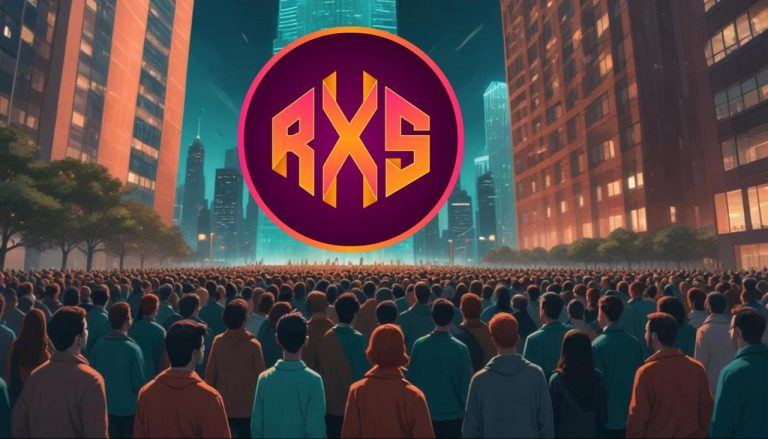


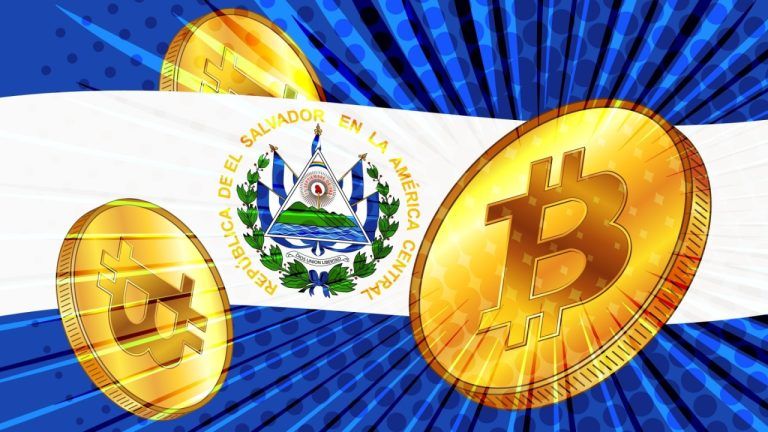

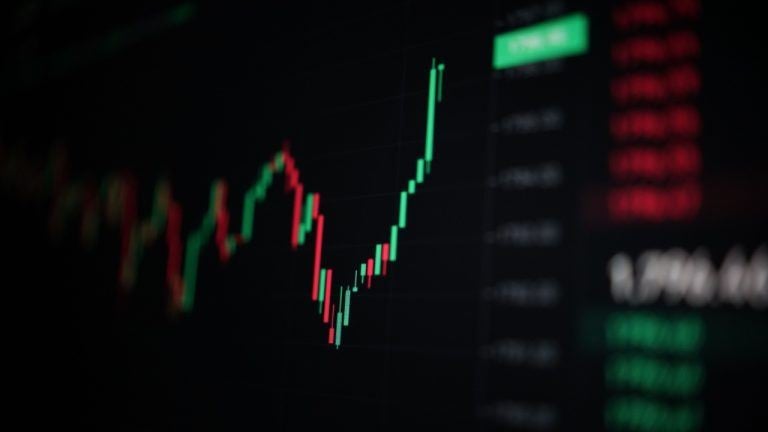



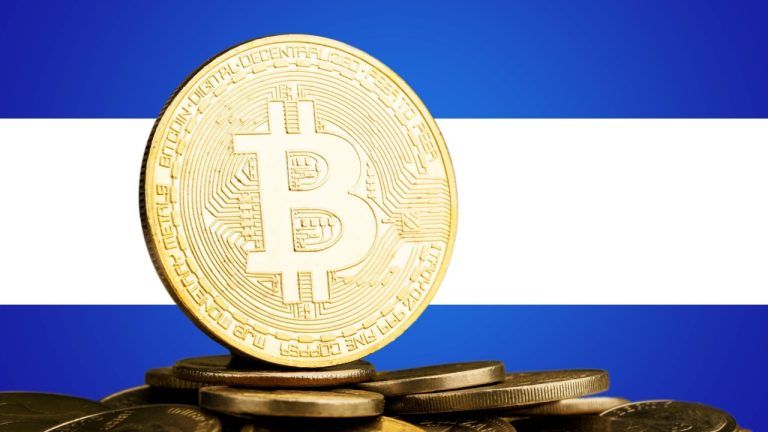

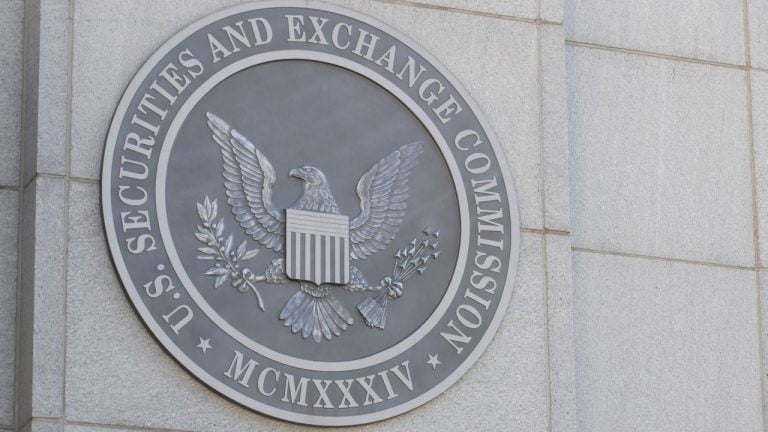





Comments